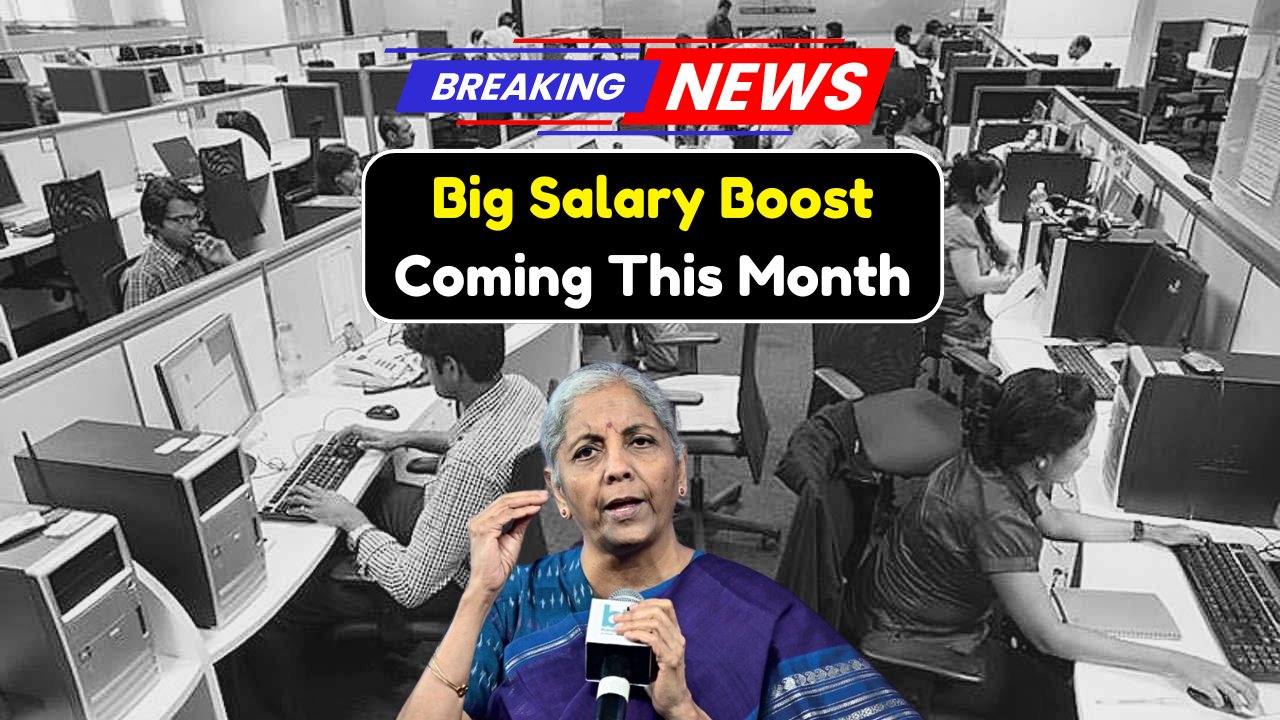Salary Hike for Employees : In a significant move that brings cheer to millions of workers, the Indian government and private sector firms are set to implement a revised salary structure that will increase take-home pay starting mid-2025. The new changes come in response to recommendations under the new labor codes and inflation adjustments. Employees in various sectors, from IT to manufacturing, are expected to benefit from higher basic pay, improved PF contributions, and other allowances.
This article explores the revised pay structure, eligibility criteria, sector-wise impact, and what employees should do to prepare for the change.
Why Is the Salary Hike for Employees Being Introduced?
The hike in private sector salaries is primarily influenced by:
- Implementation of the new labor codes by the Ministry of Labour and Employment
- Inflation-linked cost of living adjustments
- Retention strategies amid rising attrition in major industries
- Push from trade unions and employee associations
- Post-pandemic economic recovery and rising profits in key sectors
What’s Changing in the Salary Structure?
The updated salary system includes multiple components that will see revision. Here’s what is expected:
- Basic salary to comprise at least 50% of total CTC (Cost to Company)
- Higher Provident Fund (PF) contribution from both employer and employee
- Restructuring of allowances (HRA, special allowances, performance bonuses)
- Adjusted gratuity rules with increased long-term benefits
- Improved transparency in salary breakdown and payslips
New Salary Structure – Example Breakdown
To better understand how the new structure will look, here is a sample monthly salary breakdown before and after the new rules for an employee earning ₹50,000 CTC:
| Salary Component | Old Structure (₹) | New Structure (₹) |
|---|---|---|
| Basic Pay | 18,000 | 25,000 |
| House Rent Allowance | 8,000 | 10,000 |
| Special Allowance | 15,000 | 10,000 |
| Provident Fund (12%) | 2,160 | 3,000 |
| Gratuity | 865 | 1,250 |
| Net Take-home Salary | ~43,000 | ~44,750 |
Eligibility Criteria for the Salary Hike
The salary hike will not be uniform across all employees. Key eligibility factors include:
- Employee must be working in the organized private sector
- Regular full-time employees (not contractual/freelancers)
- Tenure with the company may impact hike percentage
- Applicable to companies complying with new labor laws
- Industry-specific policies may vary slightly
Which Sectors Will Benefit the Most?
While all sectors will see some degree of increase, the following industries are expected to witness the highest gains:
| Sector | Average Hike (%) | Reason for Boost |
|---|---|---|
| Information Technology | 8-12% | Talent retention, international contracts |
| BFSI (Banking & Finance) | 7-10% | Rising profits, global market expansion |
| Manufacturing | 6-9% | Post-pandemic recovery |
| E-commerce/Retail | 10-14% | Increased consumer spending |
| Healthcare & Pharma | 5-8% | Workforce expansion, rising demand |
| Telecom | 6-10% | 5G rollout, competitive hiring |
How This Affects Provident Fund and Gratuity
With the rise in basic pay, contributions to retirement and long-term benefits will also rise. Here’s how:
- Provident Fund: Both employer and employee will now contribute more, leading to higher retirement savings.
- Gratuity: Increased basic pay results in higher gratuity accrual, especially beneficial for employees staying more than 5 years.
- ESIC & Bonus Implications: Companies might adjust their contributions to maintain CTC limits.
Steps Employees Should Take
To make the most of the salary hike and structural change, employees should:
- Review updated payslips and CTC letters
- Understand the breakup of salary components
- Increase voluntary PF contributions for tax-saving
- Consult HR about new benefit policies
- Plan long-term finances with revised income in mind
Frequently Asked Questions (FAQs)
Q. When will the new salary structure be applicable?
A. Most companies are expected to roll it out between June and October 2025.
Q. Will this affect in-hand salary negatively due to increased deductions?
A. While PF deductions will rise, the net take-home is likely to stay the same or increase marginally.
Q. Do startups also need to comply?
A. Yes, if they fall under the purview of the labor laws and have over 10 employees.
Q. Is the salary hike mandatory for all firms?
A. Companies must comply with the structural norms, but actual hike percentages may vary.
The new salary structure for private sector employees in 2025 marks a significant step towards financial security, transparency, and long-term benefits. While the impact may vary across sectors and roles, the overall change is a welcome development for India’s workforce. Employees are encouraged to stay informed, review their salary slips carefully, and make the best of the hike for long-term financial planning.
